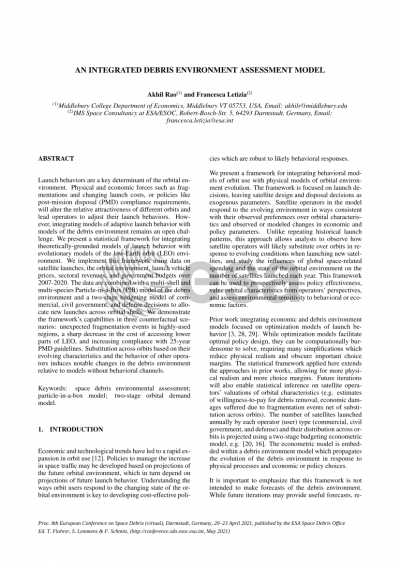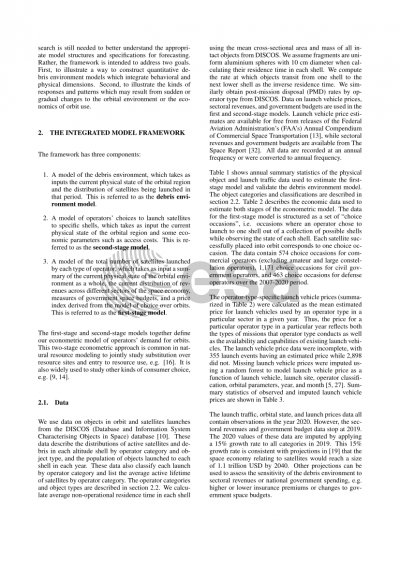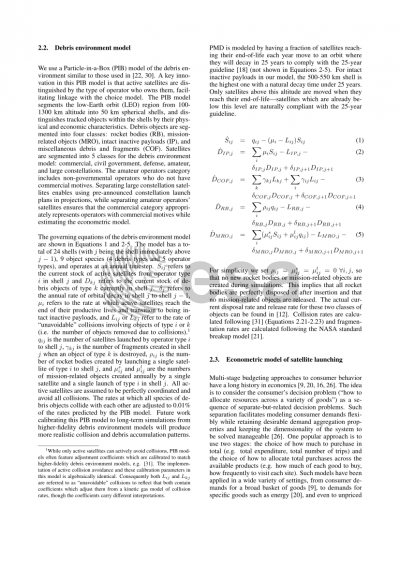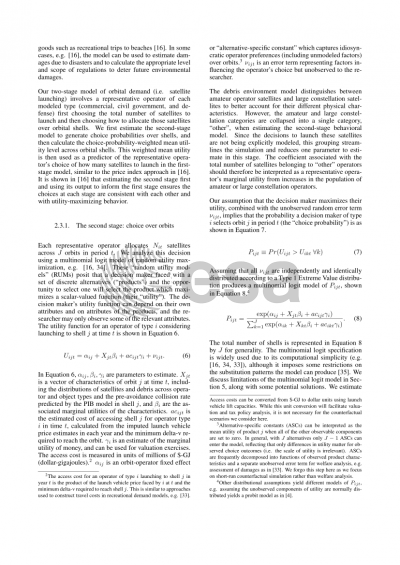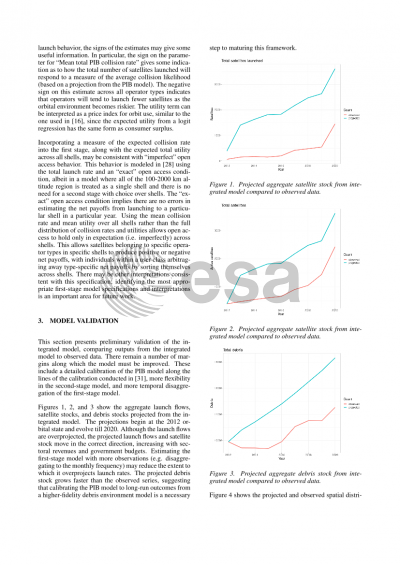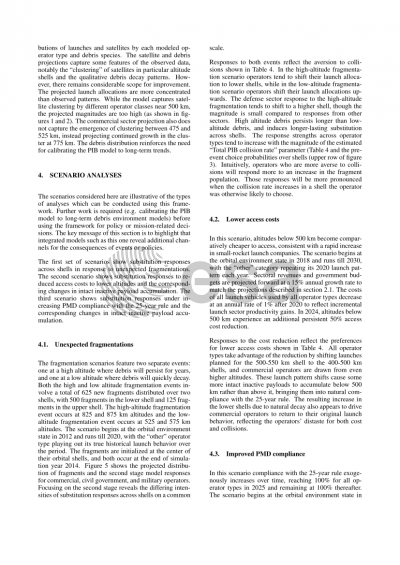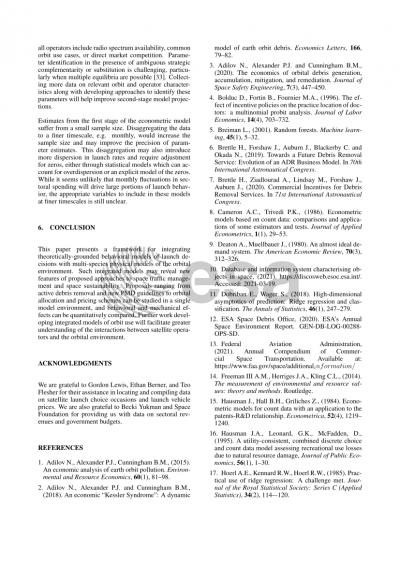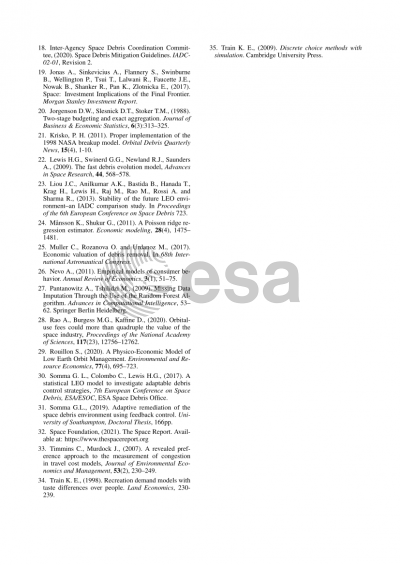Document details

Abstract
Models of the debris environment require launch rate projections. Though short-run debris forecasts can use announced launch plans, these plans are unavailable or inaccurate over longer time horizons. Medium and long-run debris forecasts typically treat launch rate sequences as parameters to conduct sensitivity analysis over. While this can be useful for understanding how the physical environment will evolve conditional on specific launch patterns, it is less useful for understanding how orbit-use decisions will respond to physical and economic trends. In particular, this approach cannot project how users will substitute between orbits in response to increasing collision risk or the introduction of orbital management policies. Such orbit-use decisions will ultimately drive realized debris and collision risk distributions.
To address these limitations, we integrate a simplified Particle-in-a-Box model of the debris environment with an econometric model of satellite launch decisions. Specifically, we apply techniques from consumer demand modelling to represent sector-specific launch rates to orbital regions as functions of physical and economic characteristics of the orbit and sector. This allows us to model how orbit-use patterns will respond to events like unexpected breakups or the introduction of orbital management policies. We focus on low-Earth orbit to illustrate the methodology.
We first discretize low-Earth orbit into a series of exhaustive and exclusive shells, then estimate sector-specific orbital demand functions using historical data. This estimation produces a model that projects rates at which users from different sectors will choose to launch satellites to each shell based on the physical and economic characteristics of the shell and their sector. Physical characteristics of the shell include features like the mean altitude, current stock of debris, and current estimated collision risk. Economic characteristics, which vary both by shell and sector, include features like the average cost of accessing the shell, concentration of other users from the same sector, and measures of sector-specific benefits derived from using the orbit (e.g. ground coverage area, average budget allocation).
In addition to their use in modelling demand for consumer products, econometric demand models are widely used in other settings, such as merger analysis, tax policy modelling, and natural resource management. They do not assume user demand (i.e. satellite launching) is driven by commercial motives. Our model will facilitate quantitative comparisons of alternative management policies while accounting for behavioral responses such as substitution between orbits in response to growing debris risk or policy measures. As the debris environment evolves, models such as ours will be critical to developing effective and efficient management policies.
Preview
